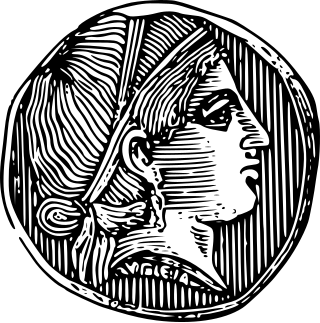Top Qs
Timeline
Chat
Perspective
International Office of Public Hygiene
Predecessor to the World Health Organization From Wikipedia, the free encyclopedia
Remove ads
The International Office of Public Hygiene (OIPH), also known by its French name as the Office International d'Hygiène Publique (OIHP), was an international organization founded 9 December 1907 and based in Paris, France.[1] It merged into the World Health Organization in 1946.[2][3][4]
Remove ads
It is the world's first universal health organization.[2] Member states exchanged information about the presence and spread of disease, as well as provided recommendations for sanitation.[2] The organization helped restructure public health services in Greece and China in the late 1920s.[2]
Remove ads
History
Summarize
Perspective
It was created to oversee international rules regarding the quarantining of ships and ports to prevent the spread of plague and cholera, and to administer other public health conventions,[5] leading to engage on other epidemics, and the collection of broader epidemiological data on various diseases, as well as issues such as the control of medicinal opium, cannabis, and other drugs,[6] the traumas created by World War I, etc.[5]
The idea to establish an international office for the purpose of acquiring and disseminating information about communicable diseases such as cholera and yellow fever was first proposed in 1903 at the International Sanitary Convention in Paris. The French government assumed the responsibility of drafting a proposal for establishing an organization and the final draft was submitted in August 1907. A following conference was held in Rome on December 3, of that same year, and in attendance were delegates from Belgium, Brazil, British India, Egypt, France, Great Britain, Holland, Italy, Portugal, Romania, Russia, Spain, Switzerland, and the United States. After some modifications, all delegates except from Romania, signed the organic statutes on December 9.[7]
November 4, 1908, a committee composed of members from each country that ratified the document met at the Ministry of Foreign Affairs in Paris. This would be the blueprint of the body’s permanent form. Its responsibilities were to create the bureau, draw up its regulations, supply its expenses, and direct its first operations.[8]
The OIHP was part of the complex structure known as the Health Organization (Organisation d'Hygiène) of the League of Nations,[9] in an often-competing, and sometimes collaborative relation with the League of Nations' Health Committee.[10]
The OIHP was dissolved by protocols signed 22 July 1946[11] and its epidemiological service was incorporated into the Interim Commission of the World Health Organization on 1 January 1947. However, the OIHP remained in existence legally until 1952.
In 1930, the Permanent committee for the OIHP played a role in addressing an outbreak of plague at various ports along the Mediterranean coast. In response to this outbreak, the committee first requested information regarding antiplague vaccine distribution regarding the type and quantity of vaccines distributed. The office also tasked a commission with developing a serum that could identify various bacterias.[12]

Remove ads
Organisation
Summarize
Perspective
The OIHP was managed by a "Permanent Committee" chaired successively by Rocco Santoliquido (1908-1919), Oscar Velghe (1919-1932), George S. Buchanan (1932-1936).[14][15][7] Important personalities were taking part in the work of the OIHP such as Camille Barrère.
As of 1933, the OIHP was composed of the following contracting parties:[14]
 Argentina, 1910
Argentina, 1910 Australia, 1909
Australia, 1909 Belgian Congo, 1927
Belgian Congo, 1927 Belgium, 1907
Belgium, 1907 Bolivia, 1912
Bolivia, 1912 Brazil, 1907
Brazil, 1907 UK British dominions, 1927
UK British dominions, 1927 UK British India, 1908
UK British India, 1908 Bulgaria, 1909
Bulgaria, 1909 Canada, 1910
Canada, 1910 Chile, 1912
Chile, 1912 Denmark, 1913
Denmark, 1913 Netherlands (Dutch Indies), 1925
Netherlands (Dutch Indies), 1925 Egypt, 1907
Egypt, 1907 France, 1907
France, 1907 French Algeria, 1910
French Algeria, 1910 French Equatorial Africa, 1929
French Equatorial Africa, 1929 French Indochina, 1914
French Indochina, 1914 French West Africa, 1920
French West Africa, 1920 Germany, 1928
Germany, 1928 UK (Great Britain), 1907
UK (Great Britain), 1907 Greece, 1913
Greece, 1913 Kingdom of Hejaz, 1932
Kingdom of Hejaz, 1932 Ireland (Irish Free State), 1928
Ireland (Irish Free State), 1928 Italy, 1907
Italy, 1907 Japan, 1924
Japan, 1924 Luxembourg, 1926
Luxembourg, 1926 Madagascar, 1920
Madagascar, 1920 Morocco, 1920
Morocco, 1920 Mexico, 1909
Mexico, 1909 Monaco, 1913
Monaco, 1913 Netherlands, 1907
Netherlands, 1907 Norway, 1912
Norway, 1912 New Zealand, 1924
New Zealand, 1924 Peru, 1908
Peru, 1908 Persia, 1909
Persia, 1909 Poland, 1920
Poland, 1920 Portugal, 1907
Portugal, 1907 Romania, 1921
Romania, 1921 Sudan, 1926
Sudan, 1926 Sweden, 1909
Sweden, 1909 Switzerland[citation needed]
Switzerland[citation needed] Czechoslovakia, 1922
Czechoslovakia, 1922 Union of South Africa, 1919
Union of South Africa, 1919 Spain, 1907
Spain, 1907 French protectorate of Tunisia, 1908
French protectorate of Tunisia, 1908 Turkey, 1911
Turkey, 1911 USA, 1907
USA, 1907 Soviet Union, 1926 (initially accessed as
Soviet Union, 1926 (initially accessed as  Russian Empire in 1907)
Russian Empire in 1907) Uruguay, 1913
Uruguay, 1913
Remove ads
See also
References
Wikiwand - on
Seamless Wikipedia browsing. On steroids.
Remove ads

